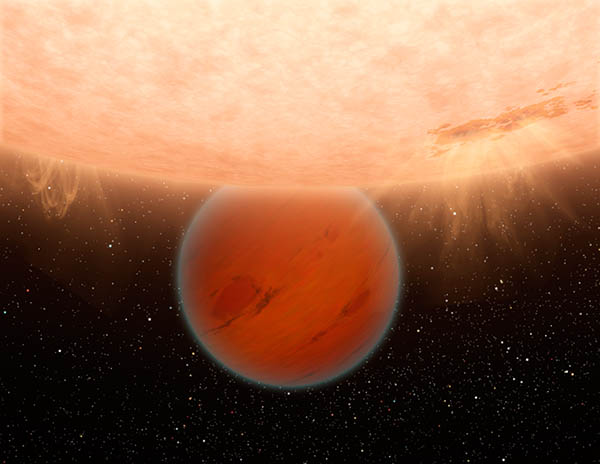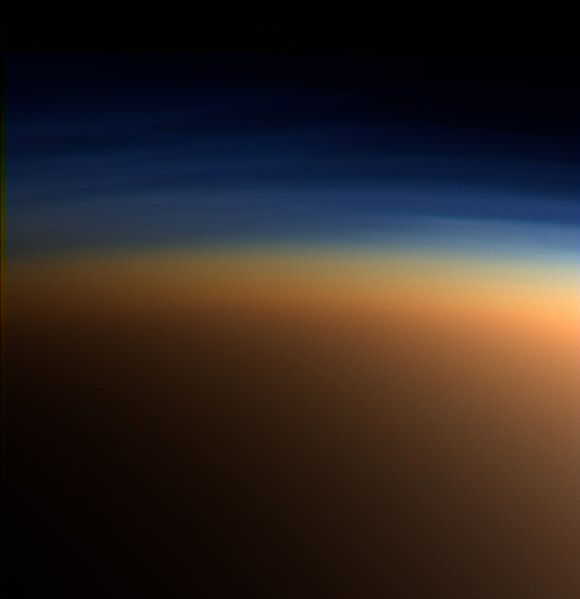http://en.wikipedia.org/wiki/Tholin wrote:
Tholin (after the Ancient Greek word θολός tholós for ”
mud”), is a heteropolymer molecule formed by solar ultraviolet irradiation of simple organic compounds such as methane or ethane.
Tholins do not form naturally on modern-day Earth, but are found in great abundance on the surface of icy bodies in the outer solar system. They usually have a reddish-brown appearance.
Tholins have also been detected in the stellar system of an eight-million-year-old star known as HR 4796A using the Near-Infrared Camera and Multi-Object Spectrometer (NICMOS) aboard the Hubble Space Telescope. HR 4796A is 220 light years from Earth.
"Triton
tholin" and "Titan
tholin" are nitrogen-rich organic substances produced by the irradiation of gaseous mixtures of nitrogen and methane such as that found in those moons' atmospheres; Triton's atmosphere is 99.9% nitrogen and 0.1% methane and Titan's atmosphere is 98.4% nitrogen and the remaining 1.6% composed of methane and trace amounts of other gases. These atmospherically derived substances are distinct from "ice
tholin", which is formed by irradiation of clathrates of water and organic compounds such as methane or ethane. The plutino Ixion is also high in this compound.
The surfaces of comets, centaurs, and many icy moons in the outer solar system are rich in deposits of Triton, Titan and ice
tholins. The haze and orange-red color of Titan's atmosphere and centaur-class planetoids are thought to be caused by the presence of
tholins.
Tholins may also have been detected in the protoplanetary disks of young stars; see HR 4796A. Some researchers have speculated that Earth may have been seeded by organic compounds early in its development by
tholin-rich comets, providing the raw material necessary for life to develop; see Urey-Miller experiment for discussion related to this issue.
Tholins do not exist naturally on current-day Earth due to the oxidizing character of its atmosphere.
A theoretical model explains formation of
tholins by the dissociation and ionization of molecular nitrogen and methane by energetic particles and solar radiation, formation of ethylene, ethane, acetylene, hydrogen cyanide, and other small simple molecules and small positive ions, further formation of benzene and other organic molecules, their polymerization and formation of aerosol of heavier molecules, which then coagulate and deposit on the planetary surface.
The term "
tholin" was coined by astronomer Carl Sagan to describe the difficult-to-characterize substances he obtained in his Urey-Miller-type experiments on the gas mixtures that are found in Titan's atmosphere. It is not a specific compound but is a term generally used to describe the reddish, organic component of planetary surfaces.
Tholins formed at low pressure tend to contain nitrogen atoms in the interior of their molecules, while
tholins formed at high pressure are more likely to have nitrogen atoms located in terminal positions.
Tholins can act as an effective screen for ultraviolet radiation, protecting the planetary surface from it. A wide variety of soil bacteria are able to use
tholins as their sole source of carbon. It is thought
tholins may have been the first microbial food for heterotrophic microorganisms before autotrophy evolved.>>




